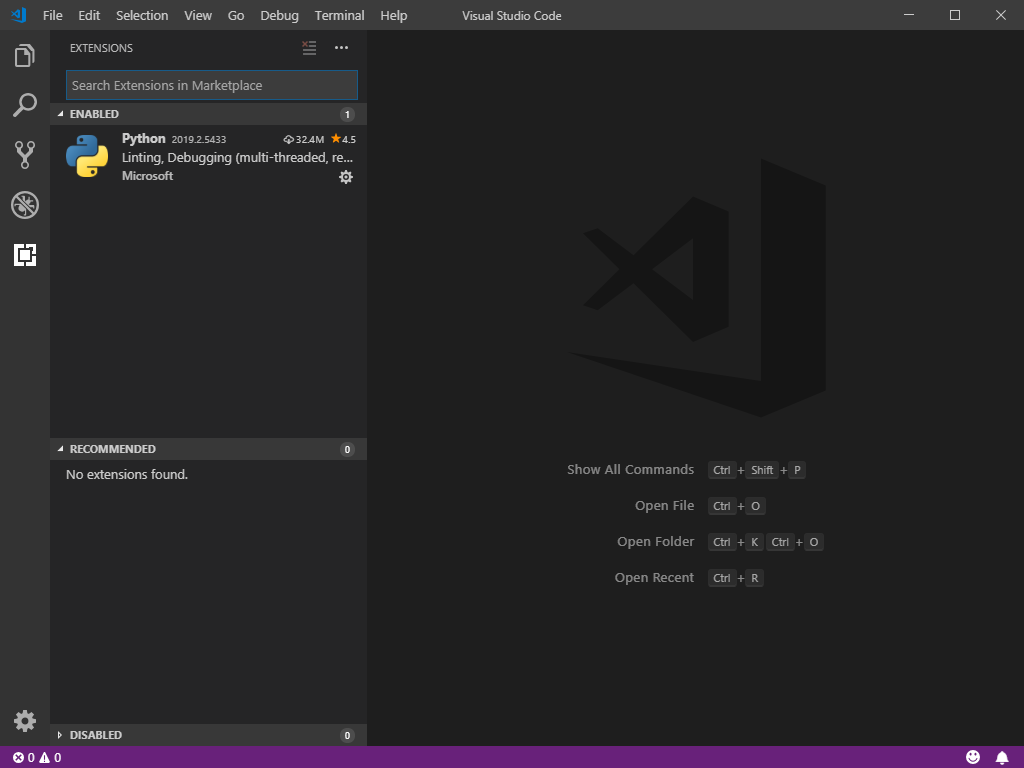

In the above code, for example, one might expect that calling foo() repeatedly (i.e., without specifying a bar argument) would always return 'baz', since the assumption would be that each time foo() is called (without a bar argument specified) bar is set to (i.e., a new empty list).īut let’s look at what actually happens when you do this: > foo() bar.append("baz") # but this line could be problematic, as we'll see.Ī common mistake is to think that the optional argument will be set to the specified default expression each time the function is called without supplying a value for the optional argument. For example, consider this Python function definition: > def foo(bar=): # bar is optional and defaults to if not specified While this is a great feature of the language, it can lead to some confusion when the default value is mutable. Python allows you to specify that a function argument is optional by providing a default value for it. (Note: This article is intended for a more advanced audience than Common Mistakes of Python Programmers, which is geared more toward those who are newer to the language and may be less familiar with common Python errors.) Common Mistake #1: Misusing expressions as defaults for function arguments With that in mind, this article presents a “top 10” list of somewhat subtle, harder-to-catch, and yet all-too-common Python mistakes that can bite even some more advanced Python developers in the rear. Python’s simple, easy-to-learn syntax can mislead Python developers – especially those who are newer to the language – into missing some of its subtleties and underestimating the power of the diverse Python language. Python supports modules and packages, thereby encouraging program modularity and code reuse. Its high-level built in data structures, combined with dynamic typing and dynamic binding, make it very attractive for Rapid Application Development, as well as for use as a scripting or glue language to connect existing components or services. but for Python Microsoft Python and Jupyter extension is the best.Python is an interpreted, object-oriented, high-level programming language with dynamic semantics.
#VISUAL STUDIO CODE PYTHON ERRORSNOT GOING AWAY INSTALL#
If you go with both the options, you install Code Runner and Microsoft Python and Jupyter extensions then the Microsoft Python extension will only work if you disable Code Runner.Ĭode Runner is a good extension for C, C++, Java, Javascript, Perl. You must go with the first option by Microsoft. Install Code Runner, code -install-extension de-runner

Or you can use your terminal or command prompt to install it. Search for Code Runner in Microsoft Visual Studio Code's Extension: Marketplace and hit on install. Install Code Runner for Visual Studio Code.Install Microsoft Jupyter extension, code -install-extension ms-toolsai.jupyter Install Microsoft Python extension, code -install-extension ms-python.python Open the terminal or command prompt and write these commands there. Or you can use your terminal or command prompt to install them. Search for Jupyter in Microsoft Visual Studio Code's Extension: Marketplace and hit on install. Search for Python in Microsoft Visual Studio Code's Extension: Marketplace and hit on install. Install Microsoft Python extension for Visual Studio Code and Microsoft Jupyter extension for Visual Studio Code.


 0 kommentar(er)
0 kommentar(er)
